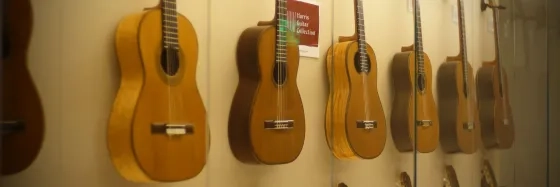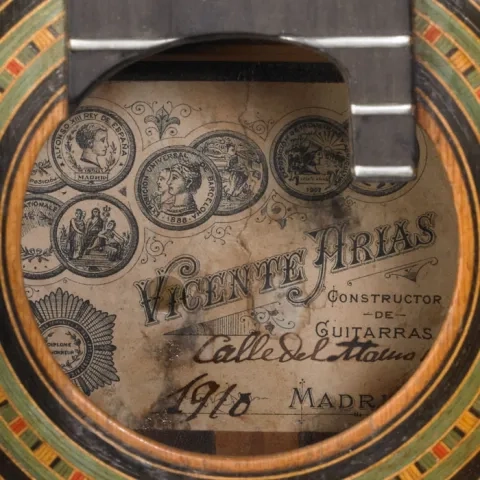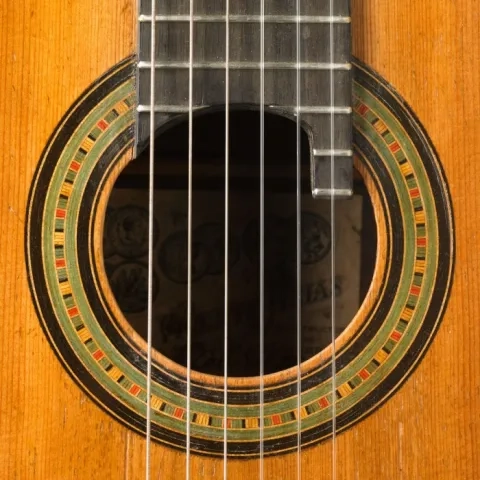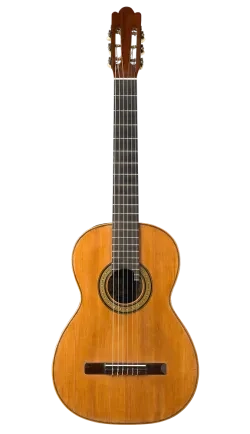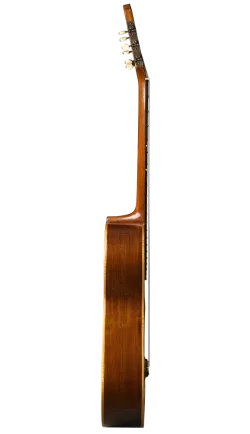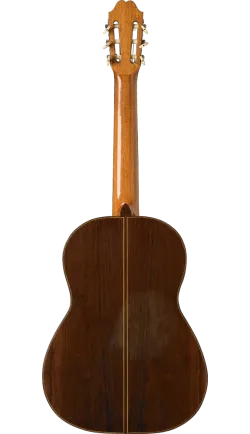Vicente Arias 1910
Vicente Arias
1910, Madrid
Top: Spruce
Back & Sides: Rosewood
A near-contemporary of Antonio de Torres, Vicente Arias (1833-1914) was, it is claimed, the only real challenge to Torres at the end of the 19th century. Yet little is known of the life of this Madrid builder accept that he was a cabinet maker before turning to guitar making, apparently self-taught. The few surviving guitars by Arias (approximately 30-40) are, over-all, smaller and lighter than Torres’ guitars. John Morrish, in The Classical Guitar, a Complete History, speculates that Arias must have believed that reducing the mass of the guitar would improve tonal quality.
This particular Arias, made from the period after Arias moved from Ciudad Real to Madrid, has vivid aesthetics, exceptional workmanship and a charming and resonant, albeit somewhat small, old-world sound. The condition is excellent, having had some recent crack repairs and re-polishing by the German luthier Fritz Ober. The unusual rosette, with fat black rings of ebony surrounding large red, green and yellow mosaics, and an original 21 fret fingerboard attest to the highly personal mastery of this enigmatic and even eccentric luthier. Nevertheless, Arias’ guitars were highly regarded by the top players of his day, including Francisco Tárrega, and they won prizes in Brussels, Barcelona, Buenos Aires and Madrid. In 2005, the Italian guitarist Stefano Grandona mounted an exhibit of Arias guitars in Venice, Italy signaling an upsurge in interest in the luthier. The Flemish guitarist, Raphaella Smits, performs her early music repertoire on an 1899 Arias.
